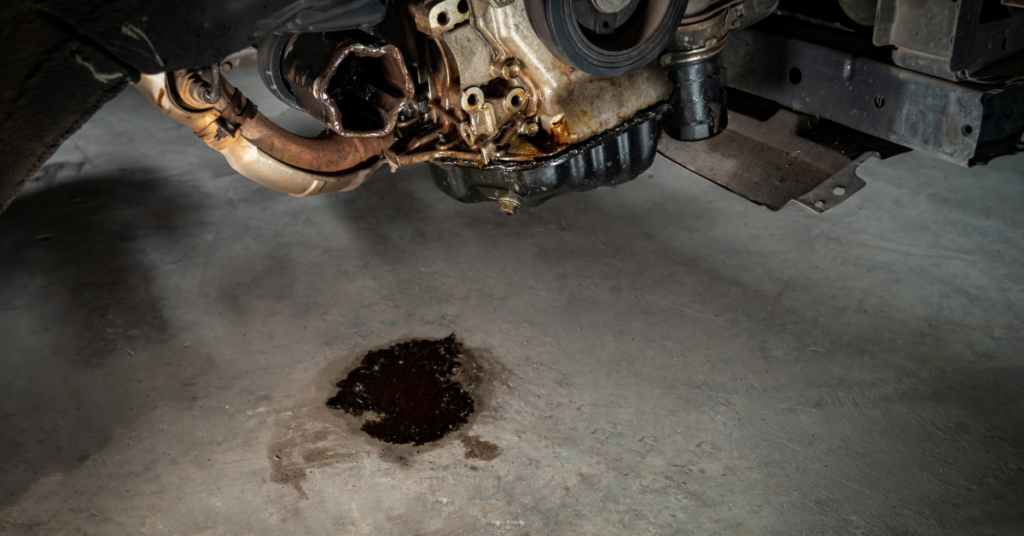
The P0401 Honda error code in vehicles is related to the Exhaust Gas Recirculation (EGR) system. This system plays a crucial role in reducing emissions and improving fuel efficiency.
It helps to recirculate a portion of the exhaust gases back into the engine, which reduces the formation of harmful pollutants.
However, when the EGR system malfunctions, it can lead to the illumination of the Check Engine Light and cause potential drivability issues.
Contents
Understanding the P0401 Honda Error Code
The P0401 error code specifically indicates a low flow or insufficient flow in the EGR system. The EGR valve is responsible for controlling the flow of exhaust gases into the intake manifold.
When the EGR valve fails to open or close properly, it disrupts the balance of exhaust gas recirculation, leading to this error code. It is important to address this issue promptly as an improperly functioning EGR system can result in increased emissions and poor engine performance.
To understand the P0401 error code better, let’s delve into the causes, symptoms, and possible solutions.
Symptoms of a P0401 Error Code
When a P0401 error code is triggered in a Honda vehicle, you may experience the following symptoms:
Illumination of Check Engine Light
The first and most noticeable symptom is the illumination of the Check Engine Light on the dashboard. This serves as a warning sign that there is a problem with the vehicle’s emissions system.
It is essential not to ignore this warning and address the issue promptly.
Reduced Engine Performance
With a faulty EGR system, you may notice a decrease in engine performance. This can manifest as reduced power, sluggish acceleration, or rough idling. If you feel that your vehicle is not performing as it should, it is important to investigate the cause behind it.
Increased Fuel Consumption
A malfunctioning EGR system can also lead to increased fuel consumption. If you notice a sudden decrease in fuel efficiency, it may be related to the P0401 error code. Keeping track of your vehicle’s fuel consumption can help identify any unusual patterns.
Common Causes of P0401
Several factors can contribute to the occurrence of the P0401 error code in Honda vehicles. Understanding these causes can help in diagnosing and resolving the issue effectively. Some common causes include:
EGR Valve Stuck Open or Closed
The EGR valve may get stuck in either the open or closed position, preventing the proper flow of exhaust gas. This can be due to carbon buildup, a damaged valve, or a faulty EGR control solenoid.
Regular maintenance and cleaning of the EGR valve can help prevent such issues.
Clogged EGR Passages
Over time, carbon deposits can accumulate in the EGR passages, restricting the flow of exhaust gas. This can lead to insufficient flow and trigger the P0401 error code. Cleaning the EGR passages regularly can help prevent carbon buildup.
Malfunctioning EGR Control Solenoid

The EGR control solenoid controls the opening and closing of the EGR valve. If this solenoid fails, it can disrupt the EGR system’s operation and trigger the error code.
Regular inspection and replacement of the EGR control solenoid can help maintain the proper functioning of the EGR system.
Vacuum Leaks
Any leaks in the vacuum lines connected to the EGR system can cause a drop in pressure, affecting the EGR valve’s functionality. It is essential to inspect the vacuum lines regularly and repair any leaks to ensure proper EGR system operation.
Diagnosing and Resolving P0401
As you explore the P0340 code in your Honda, consider the relevance of deciphering the same issue in a Hyundai. This comparative analysis broadens your expertise, allowing you to navigate through potential challenges with a more informed perspective on various vehicles.
To diagnose and resolve the P0401 error code in your Honda vehicle, follow these steps:
1. Perform a Visual Inspection
Start by visually inspecting the EGR valve, its vacuum lines, and the associated components. Look for any signs of damage, carbon buildup, or loose connections. It is crucial to repair or replace any damaged parts if necessary.
Additionally, cleaning the EGR valve regularly can help prevent carbon buildup and ensure smooth operation.
2. Clean the EGR Valve and Passages
If carbon buildup is identified as the cause, it is essential to clean the EGR valve and passages. Use a specialized EGR cleaner or carburetor cleaner to remove the carbon deposits.
Ensure that the valve moves freely after cleaning. Regular cleaning can help prevent carbon buildup and maintain optimal EGR system performance.
3. Test the EGR Control Solenoid
If the EGR control solenoid is suspected to be malfunctioning, it can be tested using a multimeter. Consult the vehicle’s service manual for the appropriate resistance values and testing procedures.
Replace the solenoid if it fails the test. Regular inspection and testing of the EGR control solenoid can help identify any issues early on.
4. Check for Vacuum Leaks

Inspect the vacuum lines connected to the EGR system for any signs of leaks. Use an appropriate method (such as a smoke test) to detect and repair any leaks. Ensure that the vacuum lines are properly connected and sealed.
Regular inspection and maintenance of the vacuum lines can help prevent vacuum leaks and ensure proper EGR system operation.
5. Reset the Error Code
After addressing the possible causes and performing the necessary repairs, reset the error code using an OBD-II scanner. This will clear the Check Engine Light and allow you to monitor if the issue has been successfully resolved.
Regularly monitoring the error codes can help identify any recurring issues and take appropriate action.
Seeking Professional Help
If you are unsure about diagnosing or resolving the P0401 error code in your Honda vehicle, it is recommended to seek assistance from a qualified automotive technician. They have the expertise and tools necessary to accurately diagnose the issue and provide appropriate solutions.
Professional help can ensure that the problem is resolved effectively and prevent any further damage to your vehicle.
Conclusion
In conclusion, the P0401 error code in Honda vehicles relates to a low flow or insufficient flow in the EGR system. It is important to address this issue promptly to prevent further damage and ensure optimal engine performance.
By understanding the causes, symptoms, and diagnostic steps discussed in this article, you can effectively tackle the P0401 error code and restore your Honda vehicle’s performance.
Regular maintenance and inspection of the EGR system can help prevent such issues and maintain overall vehicle efficiency.
FAQ
1. What does the P0401 error code indicate in Honda vehicles?
The P0401 error code in Honda vehicles indicates a low flow or insufficient flow in the Exhaust Gas Recirculation (EGR) system.
2. What are the symptoms of a P0401 error code in a Honda vehicle?
The symptoms of a P0401 error code in a Honda vehicle include the illumination of the Check Engine Light, reduced engine performance, and increased fuel consumption.
3. What are the common causes of P0401 in Honda vehicles?
The common causes of P0401 in Honda vehicles include a stuck EGR valve, clogged EGR passages, malfunctioning EGR control solenoid, and vacuum leaks in the EGR system.
4. How can the P0401 error code in Honda vehicles be diagnosed and resolved?
To diagnose and resolve the P0401 error code in a Honda vehicle, perform a visual inspection, clean the EGR valve and passages, test the EGR control solenoid, check for vacuum leaks, and reset the error code using an OBD-II scanner. Seeking professional help is also recommended if unsure.



